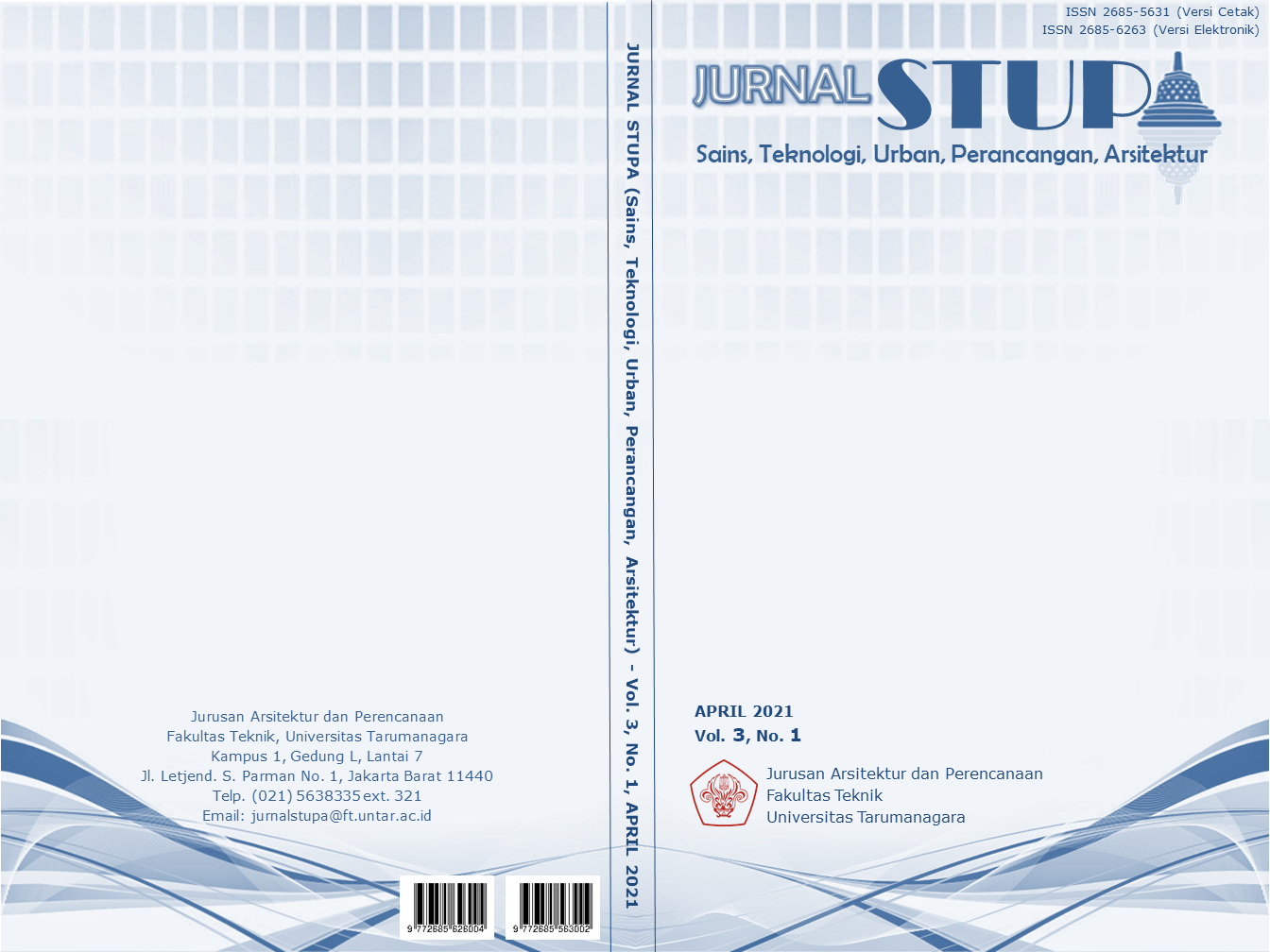DALIHAN NA TOLU: “CARA HIDUP ORANG BATAK”
Main Article Content
Abstract
Dalihan Na Tolu is a philosophical meaning for Batak ethnic group which means ‘tungku tiga kaki’ in Indonesian. Dalihan Na Tolu has become the dwelling of the Batak people which is a three-inseparable unity (respect, help, and appriciate) in the life of the Batak people and is implemented into the concept of the traditional Batak house architecture. This project will expose the life of the ethnic group to the outside community, in order to other people understand the way of living, eating, socilizing, and understanding the history of Batak ethnicity. The project will eliminate any negative stigma about the group. In addition, this will give Batak people different perspective about outsiders. As a result, the value of the area in Cililitan which has been exclusive will increase. Moreover, the design solution offers re-creating interactive programs that elevate the essence of the Batak people. This can be done by adapting architectural details from traditional Batak housesandornaments. For example, the use of windveil with Batak Gorga motifs, wooden blinds with geometric shapes of Ulos cloth motifs, and solar panels to produce and save energy. In conclusion, the building that is designed becomes music through air, light, and sound
Keywords: Batak; Cililitan; Dalihan Na Tolu; Dwelling; Windveil
Abstrak
Dalihan Na Tolu berarti mengembalikan esensi seluruh etnis Batak yang artinya tungku tiga kaki. Dalihan Na Tolu ini menjadi cara hidup orang Batak yang merupakan tiga kesatuan (menghormati, menghargai, dan menolong) yang tidak dapat dipisahkan dalam kehidupan orang Batak dan juga implementasi ke dalam konsep rumah adat Batak. Proyek ini bertujuan untuk mengeskpos kehidupan etnis Batak kepada masyarakat luar, sehingga masyarakat luar dapat merasakan cara berhuni orang Batak mulai dari berhuni, makan, besosialisasi, berinteraksi, dan sejarah tentang orang Batak, sehingga tidak muncul lagi stigma-stigma negatif tentang orang Batak. Selain dari itu, dari kalangan orang-orang Batak sendiri dapat melihat ke arah luar, di mana banyak masyarakat luar yang tertarik dan ingin tahu tentang cara hidup dan berhuni orang Batak sehingga dapat meningkatkan nilai kawasan di Cililitan yang selama ini bersifat eksklusif. Solusi yang ditawarkan ke dalam perancangan adalah mengangkat kembali program-program interaktif yang mengangkat esensi orang Batak menjadi program-program pada perancangan, begitu pun detail-detail arsitektur yang mengadaptasi dari rumah adat Batak, dan ornamen-ornamen Batak seperti penggunaan windveil dengan motif gorga Batak, penggunaan krepyak kayu dari bentuk geometris motif kain ulos, maupun solar panel untuk menghemat energi yang menghasilkan pengudaraan, dan pencahayaan alami. Jadi bangunan yang di desain menjadi bermusik lewat udara, cahaya, dan suara.
Article Details
References
Heidegger, M. (1971). Building Dwelling Thinking. From Poetry, Language, Thought, translated by Albert Hofstadter. New York: Harper Colophon Books. http://home.lu.lv/~ruben/Building%20Dwelling%20Thinking.htm
Heidegger, M. (1927). Being and Time. Translated by John Macquarrie & Edward Robinson, (1962). New York: Harper.
Montgomerry, Charles. (2013). Happy City. Canada: Farrar.
Norberg-Schulz, C. (1985). The Concept of Dwelling: on the way to figurative architecture. New York : Rizzoli
Samosir, S. L. and Amal, B. K. (2016) "LAPO TUAK" SEBAGAI RUANG PUBLIK PERSPEKTIF JURGEN HABERMAS. Medan: Yayasan Al-Hayat. ISBN 978-602-73056-2-5
Sim, D. (2019). Soft City. Washington: Island press.



